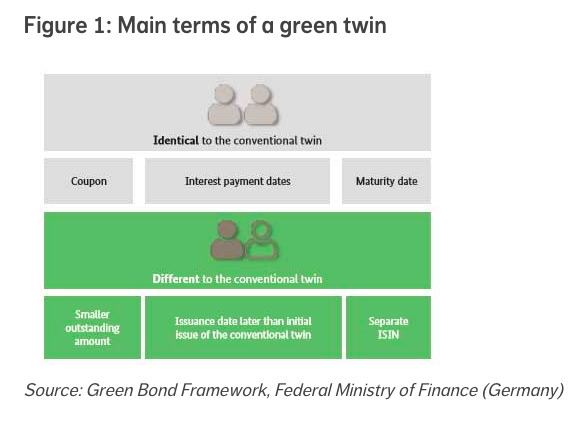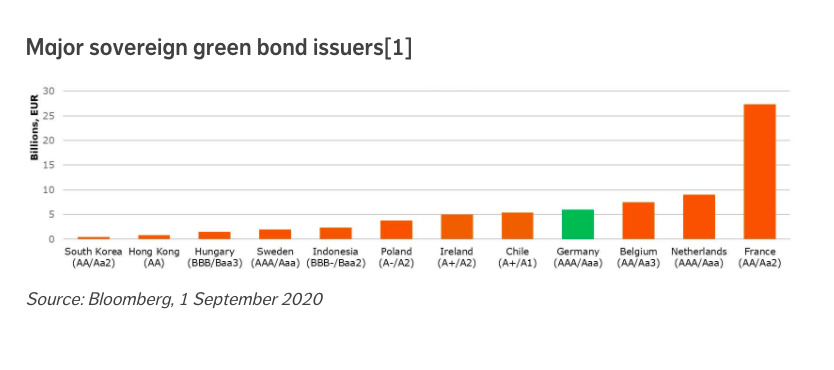By Jonas Wäingelin, NordicInvestor
More investors will be able to tap into the green bond market after the German government sold its first green bond and signalled plans to build an extensive green bond offering. Germany is the third AAA-rated country after the Netherlands and Sweden to issue a green government bond. The German government also announced its commitment to building a full green yield curve, next to its conventional yield curve.
“Clearly the growth of the green bond market keeps accelerating and the strong increase in government issuance gives more investors the chance to greenify their full fixed income portfolios,” says Bram Bos, Lead Portfolio Manager Green Bonds at NN Investment Partners. “This is an important milestone for the green bond market as German government bonds are one of the most important reference points in the capital markets.”
The market for sovereign green bonds has been growing rapidly, with Sweden also coming to the market earlier this week with its inaugural green bond. Green bonds’ financial characteristics (structure, risk and returns) are similar to those of traditional bonds, the difference lies in the green bond issuer’s commitment to use the proceeds or funds raised to finance or re-finance climate- or environment-related projects, assets or business activities.
Innovative twin structure
The German concept of “Green Twin Bonds” allows a green bond to be issued with the same maturity and coupon as a conventional bond. The green bond is a separate bond with a smaller issue volume than the conventional bond. The aim of this structure is to ensure that the issuance of green bonds does not negatively affect the overall liquidity of the German government bond market. It also makes it easier for there to be a natural diversification between conventional and green bond investors.
“We strongly support the issuance of green German government bonds,” continues Bos. “The concept of “Green Twin Bonds” is a new and innovative form of green bond issuance we favour. We think this is a much better option than the concept currently being explored by the Danish government, which is looking to issue separate green labels or stickers which could be attached to any conventional bond.”
Carbon neutral by 2050
Germany is committed to being almost climate neutral by 2050. In November 2016, the German federal government adopted the Climate Action Plan 2050, making the country one of the first to submit its long-term greenhouse gas emission strategy to the UN, as required under the Paris Agreement. This plan outlines the basic principles for its climate change mitigation strategy to reach 80 to 95 percent reduction in greenhouse gas emissions by 2050 compared to 1990 levels.
On 2 September, Germany issued EUR 6.5 billion worth of bonds with a maturity of 10 years. In contrast to some other countries, like the Netherlands, Belgium and France, Germany plans to build a full yield curve. This gives investors more options to greenify their fixed income portfolio at several different points along the yield curve. After this inaugural green bond, Germany is expected to be a regular issuer, issuing around EUR 10 billion per year in green bonds.
Germany has identified five sectors to which they can allocate the proceeds of their green bonds. These are transport; international cooperation; research, innovation and awareness raising; energy and industry; and agriculture, forestry, natural landscapes and biodiversity.
“Although we think it is a positive development that Germany has started issuing green bonds, the country’s green bond framework is not as clearly aligned with international standards like the Green Bond Principles and the EU and Climate bond Initiative taxonomies as some other green government bonds” says Bos. “For example, a large portion of these green bond proceeds will be allocated to trains and rail infrastructure, which could also include the freight transport of fossil fuels. We miss the ‘do no harm’ assessment in this green bond framework, which is one of the pillars of the EU taxonomy and EU Green Bond standard. However, we also see some positives and commend the German government’s ambition to only allow green hydrogen production in the eligible use of proceeds. Green hydrogen is produced using only renewable energy and the German renewables market is well placed to develop this exciting industry innovation and make it cost competitive.”
[1] Federal Republic of Nigeria, Republic of Fiji, Republic of Lithuania and Republic of Seychelles have also issued green bonds, but the size was very small.





